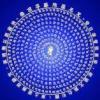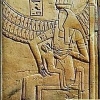Search the Community
Showing results for tags '4 elements'.
Found 3 results
-
An excerpt from "The Benefits of Walking Meditation" by Sayadaw U Silananda - brackets are mine: http://www.accesstoinsight.org/lib/authors/silananda/bl137.html "...Our effort in walking meditation is to see our movements as closely as the camera sees them, frame by frame. We also want to observe the awareness [i.e. attention/attentiveness] and intention preceding each movement. We can also appreciate the power of the Buddha's wisdom and insight, by which he actually saw all of the movements. When we use the word "see" or "observe" to refer to our own situation, we mean that we see directly and also by inference; we may not be able to see directly all of the millions of movements as did the Buddha. Before yogis begin practicing walking meditation, they may have thought that a step is just one movement. After meditation on that movement, they observe that there are at least four movements, and if they go deeper, they will understand that even one of these four movements consists of millions of tiny movements. They see nama and rupa, mind and matter, arising and disappearing, as impermanent. By our ordinary perception, we are not able to see the impermanence of things because impermanence is hidden by the illusion of continuity. We think that we see only one continuous movement, but if we look closely we will see that the illusion of continuity can be broken. It can be broken by the direct observation of physical phenomena bit by bit, segment by segment, as they originate and disintegrate. The value of meditation lies in our ability to remove the cloak of continuity in order to discover the real nature of impermanence. Yogis can discover the nature of impermanence directly through their own effort. After realizing that things are composed of segments, that they occur in bits, and after observing these segments one by one, yogis will realize that there is really nothing in this world to be attached to, nothing to crave for. If we see that something which we once thought beautiful has holes, that it is decaying and disintegrating, we will lose interest in it. For example, we may see a beautiful painting on a canvas. We think of the paint and canvas conceptually as a whole, solid thing. But if we were to put the painting under a powerful microscope, we would see that the picture is not solid — it has many holes and spaces. After seeing the picture as composed largely of spaces, we would lose interest in it and we would cease being attached to it. Modern physicists know this idea well. They have observed, with powerful instruments, that matter is just a vibration of particles and energy constantly changing — there is nothing substantial to it at all. By the realization of this endless impermanence, yogis understand that there is really nothing to crave for, nothing to hold on to in the entire world of phenomena."
- 1 reply
-
- vipassana-bhavana
- 3 characteristics
-
(and 1 more)
Tagged with:
-
The Taoist view holds 5 elements while the western tradition holds that there are 4 elements. Can everyone please share their understanding of how the two systems translate? What is the relationship between the air element and the metal element, and the addition of the wood element. I nkow that the 5th western element is ether, but how does this relate to metal and wood? I know that the Taoist way was derived from the process of nature observed, but so was the western element view. Personally I'm more comfortable with the Taoist view, but just want to meld them together...
- 56 replies
-
- elements
- 5 elements
-
(and 2 more)
Tagged with:
-
Figured I'd split this off from the Real Magick posts and give it it's own thread. I am really hoping others will add to what I've written so far. I'll be busy transcribing some of the copious notes I've taken on Western Astrology eventually. I've even pondered if there is a way I could arrange my notes, exercises, etc in such a way that one could use them as a "learn-by-doing" home-study course for fellow curious TTBs. I've searched around on the web and everyone who teaches Western traditional astrology is asking for several hundred dollars to teach it . Unfortunately I don't have that kind of money so I'm having to go the DIY route. I will say this...western astrology has got to be one of the most mind-knumbingly complex subjects I've ever attempted to teach myself. I've had college courses that were many times easier than this. Sheesh... Oh yeah... Wait till I start posting notes (different thread) on how to do Western Geomancy (yeah...the western equivalent to Feng Shui). **************** NOW...ON to the Transferred Notes from the other thread: **************** This comes from some of my earliest notebooks while studying astrology, theurgy, etc. Note: It helps to temporarily set aside Chinese 5 element theory while learning this and try to learn this system on it's own terms without interference from other concepts or systems. *********** The following (If I recall correctly) was first proposed by Empedocles in the 5th century b.c.e and arranged in final form 150 years later by Aristotle. The Primary Qualities (The active pole) 1. Hot = Electric a. expansive b. centrifugal c. active d. subtle e. luminous f. radiant 2. Cold = Magnetic a. contractive b. centripetal c. static d. dark e. heavy f. dense Both of the above are the ACTIVE qualities This is the ENERGY pole The interplay of the 2 Active qualities gives rise to a new Pole. The Passive Quality Pole. These are: 3. Moist a. fluid b. cohesive c. molds easily d. adaptable e. generated primarily from Cold 4. Dry a. hardness b. resistence c. rigidity e. generated primarily from Hot The 2 Passive Qualities give rise to FORM This is the FORM pole *********************** The interplay of the 4 poles (2 active, 2 passive - that is, energy + form) give rise to the 4 elements Fire = Hot + Dry (non-molding) Water = Cold + Moist (molding) Air = Hot + Moist (molding) Earth = Cold + Dry (non-molding) In more modern terms we might say Fire = Temperature Water = Cohesion Earth = Solidity Air = Motion ***************** Properties of the Elements Fire a. masculine (yang) b. electric c. active Water a. feminine (yin) b. magnetic c. passive Air a. masculine (yang) b. electric c. active Earth a. feminine (yin) b. magnetic c. passive And finally: QUINTESSENCE 1. Quintessence is the common (transcendent) substrate or background/foundation (my note: non-dual unity?) of all the above four elements. Quintessence itself is not an element. Big note on the prior: The Elements are not "things" (except maybe nominally for language purposes). They are actually descriptions of the process of Change. That is...they are "phases" of change. Do not re-ify the elements. Hard to do (in my experience) so I find it helpful to remind myself constantly the Elements are describing phase changes, not "things" per say. ************** Believe it or not the above I just listed is one of the most important foundations for beginning to understand the logic that was behind Western Astrology (and still is to those willing to suspend modern scientistic materialistic beliefs) and why it was considered one of the classical Hermetic Arts (co-equal with Theurgy and Inner Alchemy). Hint to the above statement: "As above, so below".




